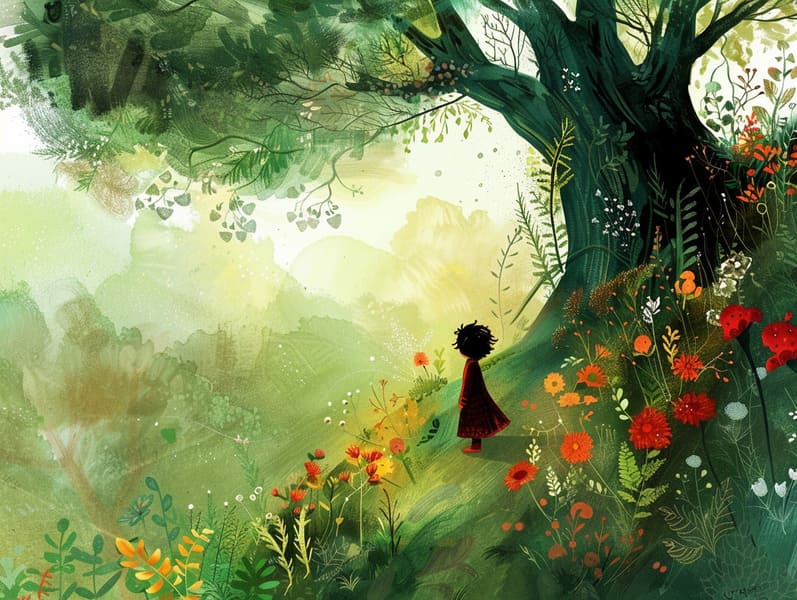The Dawn of Traditional Fairy Tales and Their Perpetual Fascination.
The Dawn of Traditional Fairy Tales and Their Perpetual Fascination.
Blog Article

Ancient fairy tales have old origins. These tales have been recounted from one generation to the next well before they were ever published. They came from a variety of backgrounds, including European traditions. They were initially narrated among older generations, often carrying themes and messages mirroring the societal norms and beliefs of the time.
The Brothers Grimm, Jacob and Wilhelm, were among the first to collect many of these beloved narratives. Their published works, "Grimm's Fairy Tales," included stories like "The Little Glass Slipper," "Hansel and Grethel," and "Snow-White and Rose-Red," which have since become pillars in the world of iconic fairy tales. Similarly, Hans Andersen's fanciful tales, such as "The Mermaid," and "The Ugly Duckling," have enchanted hearts worldwide, guaranteeing their place in the pantheon of classic fairy tales.
Though they are centuries old, classic fairy tales remain as impactful as ever, especially as children's night stories. These fantastical tales are now available in various formats, including beautifully illustrated books, magical animations, and online storybooks.
Their lasting appeal can be linked to several whimsical characteristics:
Crucial Morals: Ancient fairy tales often teach important moral lessons. Narratives like "The Tale of the Boy Who Cried Wolf" teach the significance of sincerity, while "The Race of the Tortoise and the Hare" demonstrate the merits of persistence and unpretentiousness. These stories offer young readers clear distinctions between virtue and vice, developing their moral compass in a subtle yet meaningful way.
Empathy and Understanding: Timeless fairy tales frequently showcase personalities facing challenges and struggles, inspiring listeners to empathize with their struggles and support their triumphs. For instance, "Beauty and the Beast" shows us the virtue of looking beyond appearances to comprehend the inner spirit of a being, promoting warmth and insight.
Cultural Insights: Many timeless fairy tales are steeped in the cultural contexts from which they sprang. Delving into these tales can provide captivating looks into different backgrounds, strengthening a sense of world respect and acknowledgment.
Fantasy and Innovation: The supernatural elements in classic fairy tales—supernatural elements—generate children’s imaginations. These fairy tales carry readers to fantasy realms, engendering fantasy dreams and a sense of awe that endures a lifetime.
Traditional fairy tales are not only alluring but also educational. They act as spellbinding tools in advancing various cognitive and affective skills in children. When old fairy tales are read aloud, they cultivate language acquisition by offering new lexicon and intricate sentence structures. This practice also cultivates auditory perception and mental focus, as young ones here focus on every detail, prepared to see what happens next.
Furthermore, contemplating the themes and characters of old fairy tales can promote problem-solving abilities and intellectual skills. The young learn to detect patterns, guess what will happen, and grasp cause and effect. These discussions also boost the young articulate their thoughts and feelings, nurturing their emotional intelligence.
In today’s information age, the availability of digital fairy tales has made these stories more attainable than ever. Internet resources and digital apps extend ample collections of timeless fairy tales that can be experienced or listened via anytime, anywhere. Fairy tales told out loud are particularly well-received, sharing an charming way for young ones to take part in these enchanting tales. Audiobooks and narrated videos transport characters and settings to life, often supplemented by spellbinding audio effects and musical scores that amplify the storytelling experience.
The unending appeal of traditional fairy tales lies in their ability to alter to present days while preserving their central messages. Contemporary adaptations of these fairy tales often incorporate more representative protagonists and modern settings, making them relevant to today’s audience. However, the key lessons of heroism, generosity, and equity remain unchanged, continuing to reach audiences of all ages.
Fairy tales also offer a sense of familiarity and understanding. They allow a orderly narrative with a straightforward beginning, middle, and end, often finishing with the finalization of conflicts and the triumph of virtue over vice. This uniformity can be reassuring for kids, giving a sense of invariability in an unstable world.
Classic fairy tales continue to entrance and teach new generations, maintaining their wonder and meaningfulness in modern society. As children's night stories, they highlight a perfect blend of enchantment and education, supporting moral values, empathy, and creativity. The existence of web-based fairy tales and the in demand status of fairy tales told out loud ratify that these traditional fairy tales remain attainable to new generations.
By retaining and broadcasting these fairy tales, we continue to recognize the rich tapestry of mythology and cultural heritage. Whether you are experiencing a beautifully illustrated book, enjoying a digital collection, or listening via an audiobook, the splendor of old fairy tales is always within reach. These narratives convey of the immortal presence of storytelling and its ability to unite us across epochs and places.
No matter if you are perusing a vibrantly illustrated book, delving into a internet collection, or listening via an read-aloud book, the spell of famous fairy tales is always within reach.
These narratives highlight of the persistent strength of storytelling and its ability to unite us across epochs and places, casting a charm that delights and instructs alike.